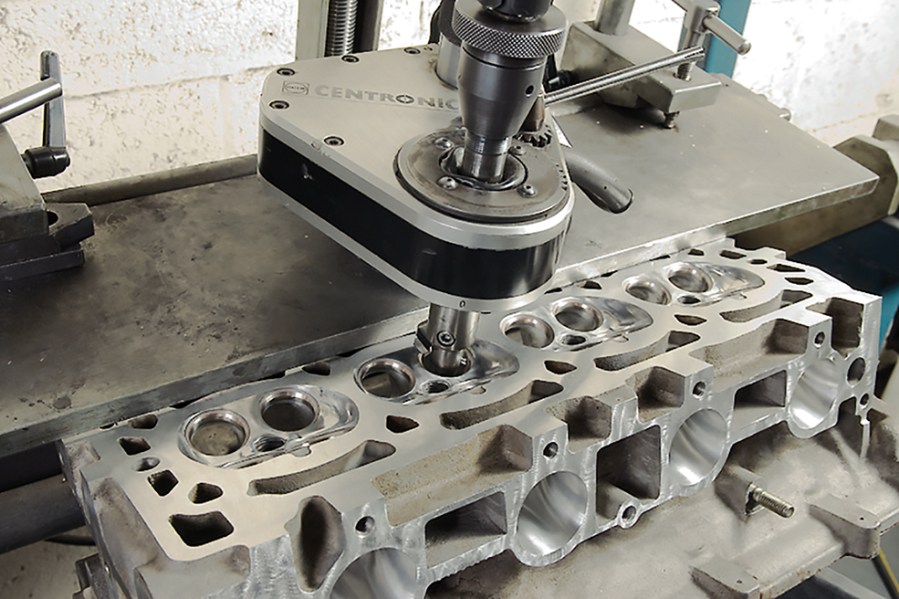Cylinder head porting is an advanced area of car tuning, so to help you get around what it all means, we take a closer look at the sure-fire way to improve an engine’s performance potential.
You may have heard that a better flowing cylinder head will improve an engine’s power potential. And you may have heard of the terms porting, gas-flowing and a big-valve head, but do you know what they actually mean, how they work and why they give the power gains they do? To answer these questions, we take a closer look at the world of cylinder head porting, breaking down different terms, and explain why cylinder head porting is crucial for gaining extra performance in a reliable manner. But, let’s start with explaining what a cylinder head is and what is does.
What does a cylinder head do?
The cylinder head is what allows the engine to breathe. It allows air/fuel mixture into the engine through one set of valves, then seals the cylinder when the valves close. This is so the mixture can combust and produce power, before expelling unwanted exhaust gases through another set of valves. As a result, it’s a crucial aspect of how an internal combustion engine works on a car.
Specialists and tuners often refer to the cylinder head as ‘the lungs of the engine’. Air is drawn in, used to create energy and then expelled out again. And sticking with our anatomical analogy, the best way to think of a standard head is as the lungs from someone who has been smoking for 50 years. The airways are restrictive and could be a whole lot better. If, however, the cylinder head ports were increased its size, the head acts more like the lungs from a long-distance runner. They are much more efficient and less restrictive to performance.
Another way to look at it is to think of the bottom end of the engine as a big pump. The cylinder head is what allows air in and out of that pump. Obviously, the more usable air/fuel you can get in, and the more exhaust gases you can get out, the more power that pump will produce.
Bigger is better?
However, sadly it’s not just a simple case of bigger is better. The head modifications need to work with the rest of the engine spec. There’s no point having a massively ported head if the rest of the engine (including induction, fueling and exhaust systems) is more restrictive than the ports in the head. However, if the engine has got a host of other goodies like lairy cams, bigger injectors, and so on, the standard ports in the head can quickly become the most restrictive part of the entire gas flow in and out of the engine. Therefore, it responds really well to porting and machine work.
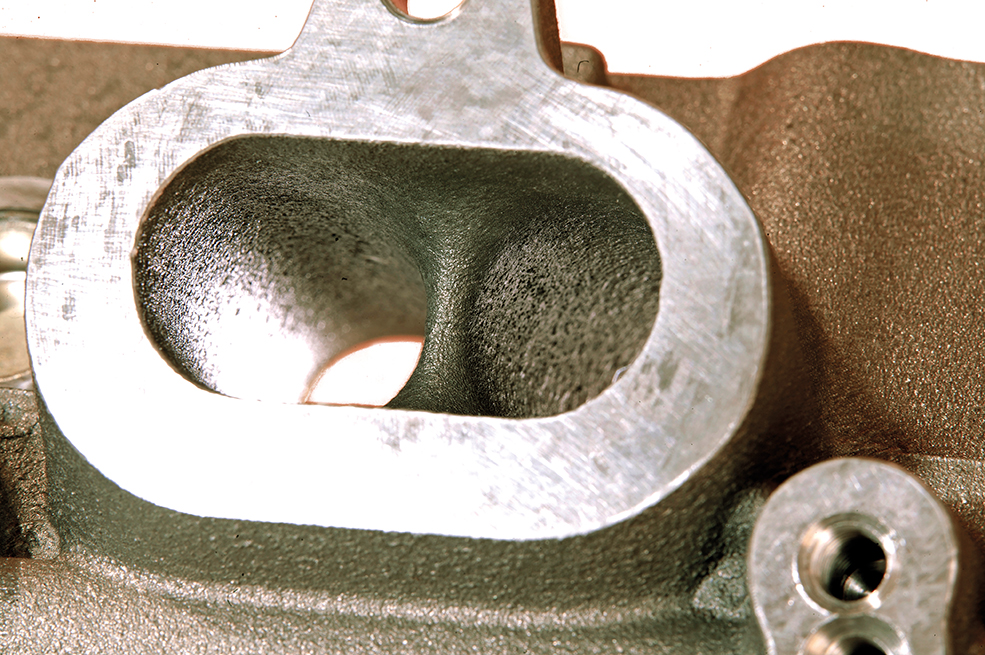
Most standard ports are quite restrictive to airflow
What are cylinder head ports?
The cylinder head ports are the passages that the fuel and air mixture travel along to enter the cylinder bores and the exhaust gases use to escape from the engine. The majority of standard heads have lots of excess material in the ports. This is due to the costs involved with fine tuning each individual head after the casting process. Major improvements can be made to the head here. When you place the inlet or exhaust manifold gaskets on a factory head, for example, you will see that there is usually a good 1-2mm of material before the ports and the manifolds line up. This material can be removed to enlarge the port to offer less restriction to the flow of gases.
But it’s not a simple case of making everything bigger. A good flowing head will have the ports as straight as possible, too. This is so the gases flow as directly as they can. As a result, this means that on some heads most or even all of the material needs to be removed from one particular area to straighten up the flow path as much as possible. The smoother and more direct the port flow from the manifold to the valve, the lower the restriction to gas flow.
Machining guides
In addition, some cylinder heads have valve guides that protrude into the throat area of the port, causing further disruption to the airflow. This is one key area that cylinder head specialists concentrate on; either ‘bullet-nosing’ the guides, or machining them back flush with the rest of the port. This can make a huge difference to the airflow and performance potential.
Larger ports will flow more gases than standard ports. But, it is as much about the shape and the flow of the port as it is about the physical size.
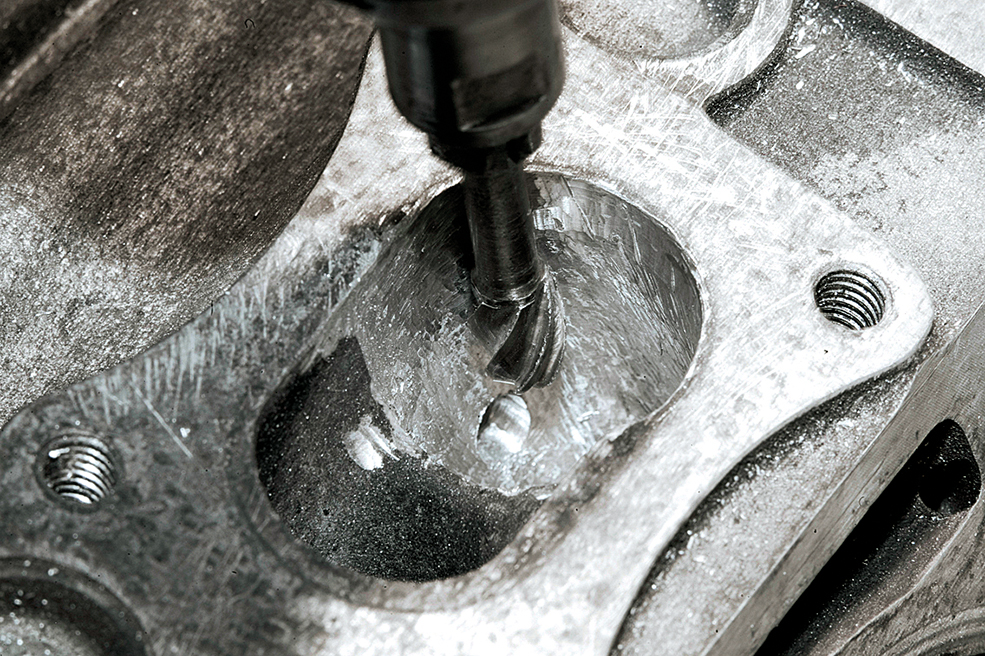
Modern day cylinder head porting
Traditionally, cylinder head porting has been done by hand, and is something of an art-form. It’s not something we’d recommend you have a go at yourself in your shed.
But modern-day technology does mean that specialists can use computers to help them out a bit. The first port and first set of inlet and exhaust valves are still ported manually. But rather than worrying about multiple ports to deal with, they concentrate all their efforts on just one. This process can take several weeks; porting, testing, flowing, porting again, and so on until they are happy. Once happy, the port can then be digitally scanned before the programme is loaded into a state-of-the-art CNC machine. The incredible accuracy of the CNC machine ensures that all ports are exactly the same shape and design. Therefore, they will flow exactly the same amount of air.
Combustion chamber
The combustion chamber is where the fuel and air mixture is ignited via the spark plug to cause combustion, and therefore energy. The more complete the combustion, in terms of burning all the available fuel and air mixture, the more efficient the engine will be. In turn, the more power it will produce.
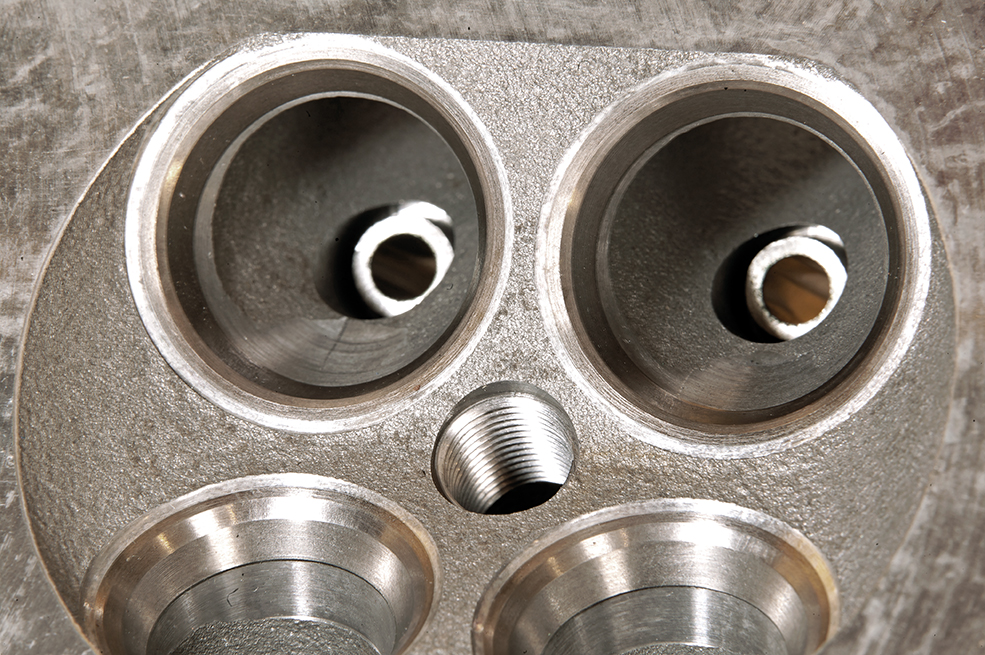
Smoothing the combustion chamber can help prevent coke build-up.
The head doesn’t have an effect on how complete the combustion will be. Complex issues with the ignition and fuel timing through the ECU control that. However, the combustion chamber itself can be smoothed and polished to make it less susceptible to coke build-up. And that coke build-up can cause hot spots within the combustion chamber. This in-turn can have an effect on how the fuel and air mixture combusts.
That’s why many specialists smooth out the surface of the combustion chamber at the same time as porting the cylinder head.
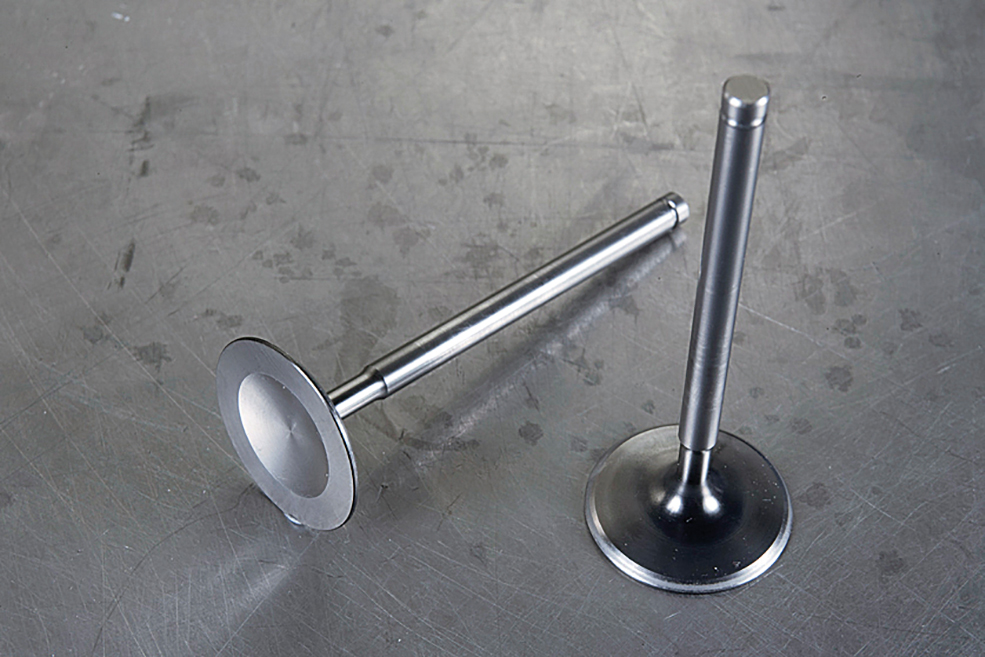
Some performance valves feature a very narrow throat to pose as little restriction as possible.
Cylinder head valves
The inlet and exhaust valves open to let fuel and air in, shut to create a seal in the cylinder, then open to let exhaust gases out.
Fitting bigger valves means the openings through which the air and fuel mixture enters, and exhaust gases exit, the cylinder are bigger. The bigger the opening the more gas can flow through. Simple as that, then?
Not quite. It’s not all about the size. Bigger valves have a lower gas speed entering the cylinder, which can cause problems with performance. Instead, specialists will work out how much air flow is needed to create the desired power levels. Then, they to achieve this flow rate with as small a valve as possible. This in-turn helps to keep the gas speed as high as possible.
Typical ‘big valves’ in most applications are between 1-2mm larger diameter than standard. This is the usual limit a valve seat in an alloy head will allow. With cast iron heads like the older Pinto engines, the valve seat is machined as part of the head so you can fit much larger valves without too many problems.
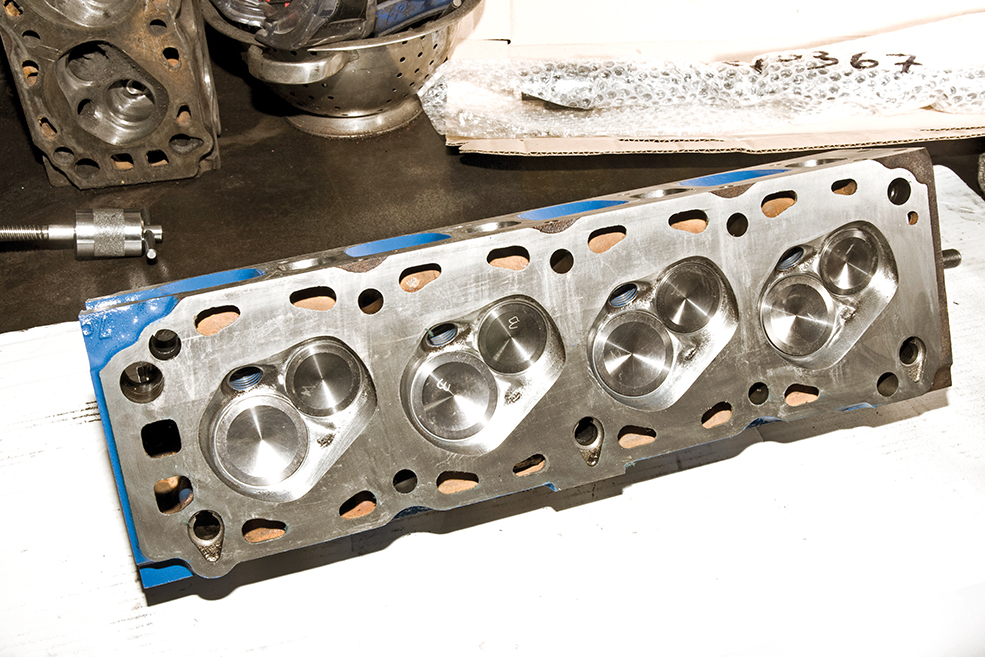
What are the different types of valves on the cylinder head?
There are two types of valve; one and two-piece. Most OE valves are of a two-piece design where the head and stem are made from separate materials then fused together to become one. The easiest way to tell if a valve is a two-piece item is to put a magnet to it; two-piece valves have a magnetic stem and a non-magnetic head. One-piece valves are usually made of a high-grade stainless steel such as 214N.
On turbocharged engines, which can experience higher cylinder temperatures, the valves may be sodium-filled to help with heat dissipation.
The shape and design of the valve also has a huge effect on the way the head flows air/fuel mixture and exhaust gases. Some high-performance engines respond well to what are affectionately known as ‘penny-on-a-stick’ valves, so called because of how they look. They have a narrower throat to the valve, and the valve itself is flatter and thinner than standard. The area gained by removing material from the valve allows the gases to flow quicker and easier past the valve. However, it depends largely on the design of the port as to whether these valves will work or not.
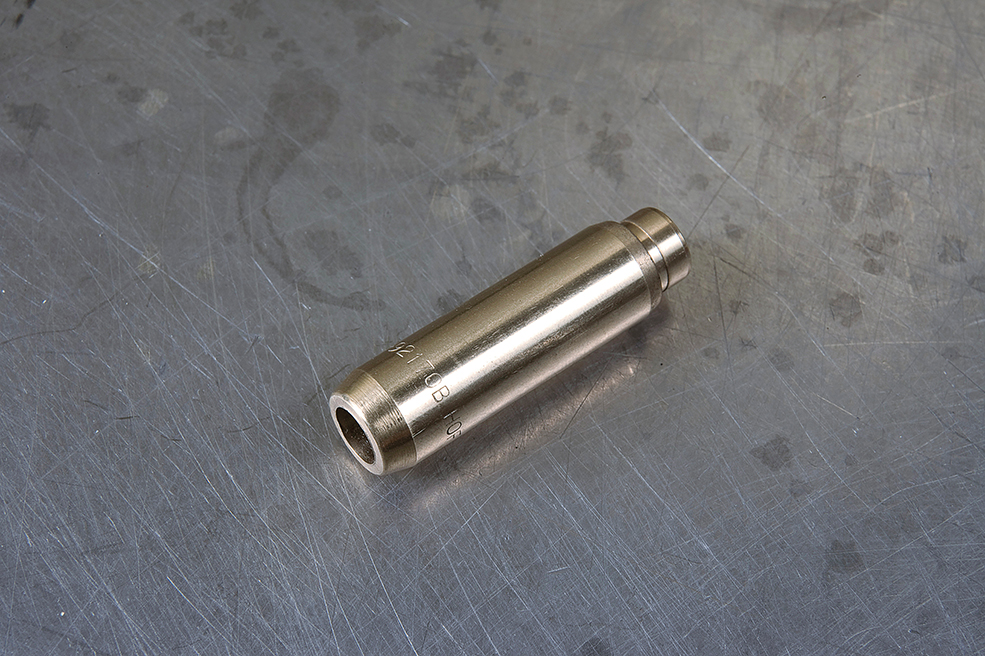
Bronze valve guides can cope with the increased heat of a performance engine better than factory-spec steel items.
Valve guides
The valve guides support the valve within the head. Most modern alloy heads have separate valve guides. However, with the older engines, such as the Pinto and the Crossflow, the valve guides are actually part of the casting.
With alloy heads the valve guide is a separate piece because the head is too soft to withstand the opening and closing motion of the valve. This means they would wear out rapidly. A steel guide insert is usually fitted.
With some performance engines such as the Cosworth YB, and many later engines, bronze valve guides are standard. Bronze helps with heat dissipation. The valves, especially exhaust valves, get very hot and can expand, and the effect is even worse in turbocharged engines. The clearance between the valves and the guides is incredibly tight, typically between 1.5 and 2thou. There isn’t much room for the valves to expand before they touch the guides. Bronze guides can deal with the heat better and help reduce the problem. They also wear much better than cast iron guides, and will last longer.
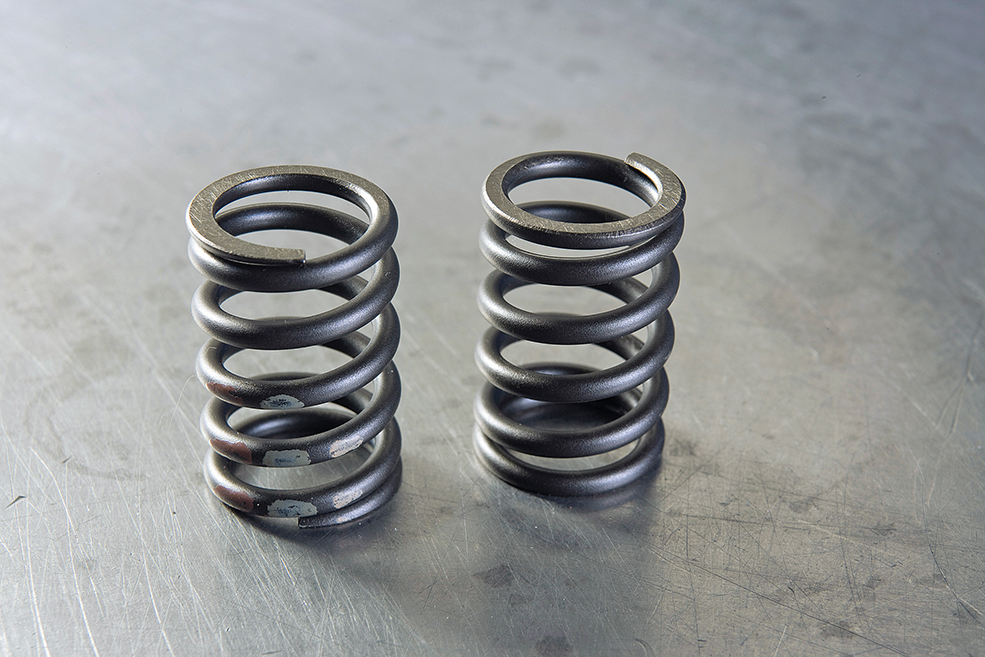
Valve springs
The valve springs’ job is to shut the valves after the camshaft has opened them, and keep them shut until the camshaft opens them again. In theory it is straightforward but there is a bit of science involved when choosing the springs to match the camshaft.
On a camshaft with high lift, the opening and closing ramps on the lobes are usually quite steep and aggressive. As you can imagine, when the engine’s revving at 7000rpm the force at which the valve hits the seat as it closes is quite hard; it is likely to want to bounce back off the seat a little. This is where you need uprated valve springs matched to the camshaft, as they will keep the valve shut and eliminate this problem.
Also the valve springs have to be matched for height to avoid becoming coil-bound at full valve lift. A higher-lift cam will compress the spring more than a normal lift cam, so the valve spring will need to accommodate this. A valve spring should always have 40thou clearance between the coils when at full lift.
Double valve springs
Double valve springs are also available for high-performance engines and work in the same way as single springs. The main benefit of double springs is they offer more strength to keep the valve closed. It is not always possible to achieve this strength with a single spring. The second, inner spring, is always shorter than the outer spring. This means the valve is easier to open because there is less resistance at first. However, when it closes it has the force of both springs pressing against it. This also helps keep the valve shut in engines with particularly aggressive camshaft designs.
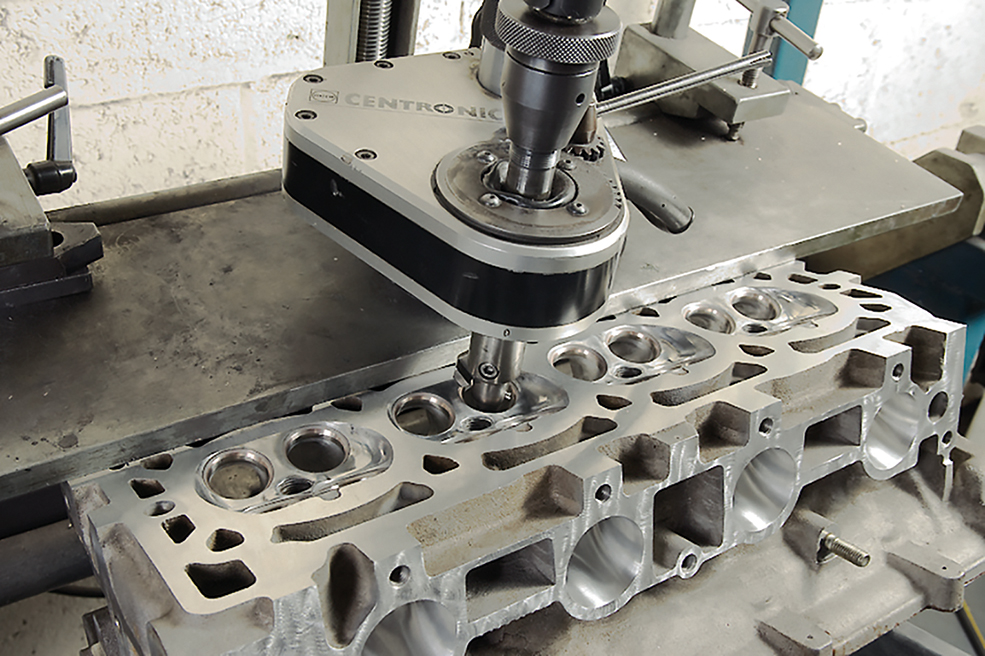
Manufacturers or tuners cut valve seats using specialist tooling.
Valve seats
The valve seat is what creates the seal when the valves close. Without an airtight seal the engine would have no compression and would therefore not run.
The part of the seat that creates the seal is the 45-degree angle that matches the 45-degree angle on the valve, and the thickness of this angle can affect a head’s performance. Narrower valve seats are less obstructive to the airflow, therefore a head with narrower seats is capable of producing more power.
The valve seat on the exhaust side helps dissipate heat from the exhaust valves. The exhaust valve seat needs to be significantly larger than the inlet seat because when the valve is shut, the contact between the two helps take heat away from the hot exhaust valve. If the contact area’s too small the exhaust valves would get too hot.
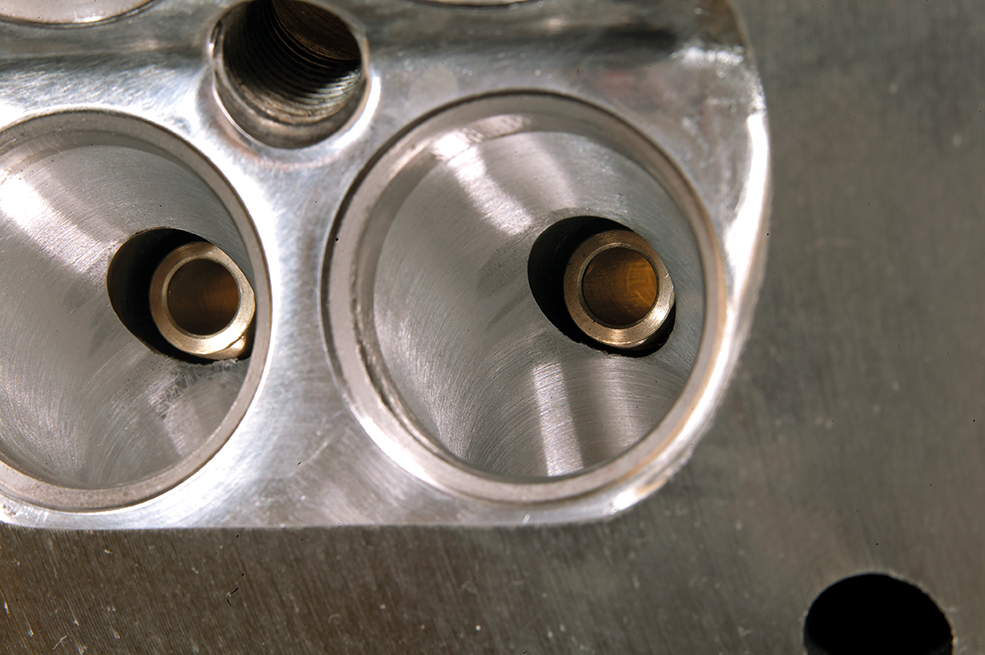
Valve seat cuts
A lot of cylinder head porting specialists like to cut three angles in to the valve seats. This opens up the seat to encourage the air/fuel mix and exhaust gases to flow around the valve rather than straight in at a 45-degree angle and potentially cause turbulence. Usually the first angle is cut at 60-degrees. The second angle is the sealing section at 45-degrees to match the valve. The third is opened up to 25- or 30- degrees.
A valve seat is around 6mm thick, so the angles are typically divided up so that the first angle is about 3.5mm. The second is 1.5mm. The third is 1mm wide.
On high-performance engines specialists will sometimes cut five angles in the valve seat, or even cut ‘radius’ valve seats which further encourage the gases to flow around the valves.
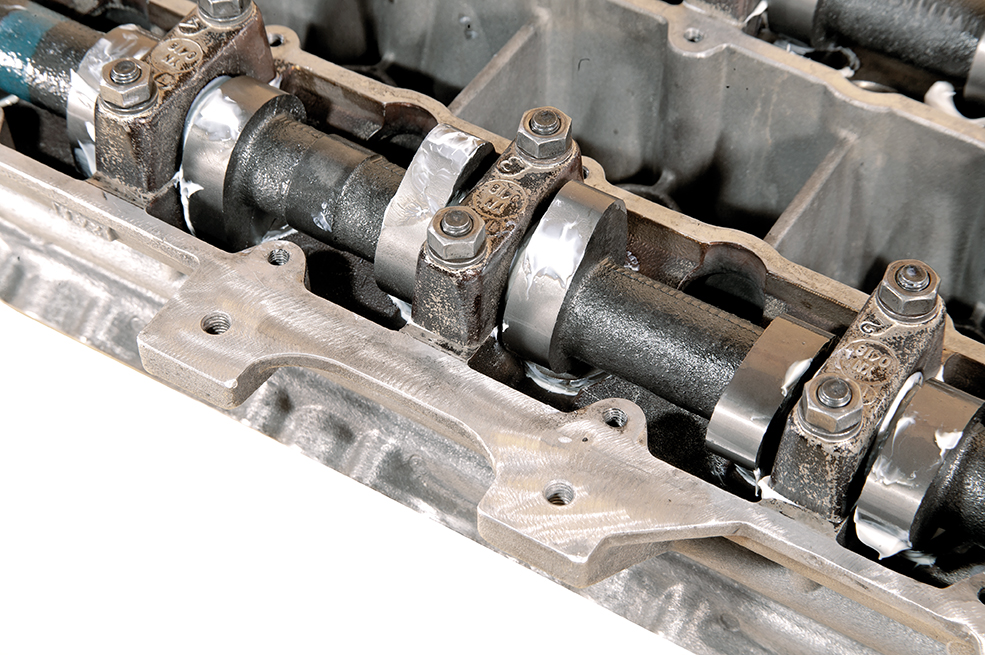
The camshaft controls the opening and closing of the valves within the head.
Camshafts
The choice of camshafts is a world of its own, and is far too complex to go into detail in this cylinder head porting guide. You can check out our camshaft guide for more advice.
However, the camshaft does have a massive influence on how the head works and reacts with different aspects of head tuning. It’s worth summarizing some of the key points while looking at cylinder heads too.
The camshaft turns rotational movement into linear movement to open and close the valves. The camshaft design determines the length of time the valves open for (duration) and the height the valves rise to (lift). These different designs will give an engine different characteristics. However, as far as the head is concerned, the camshaft dictates how much air/fuel mixture gets in and how much exhaust gases get out of an engine. Any modification carried out to the head, such as porting or bigger valves, needs a camshaft tailored to suit. For the best advice speak to cylinder head specialists or direct to the camshaft manufacturers. They will be able to guide you specifically for your engine.
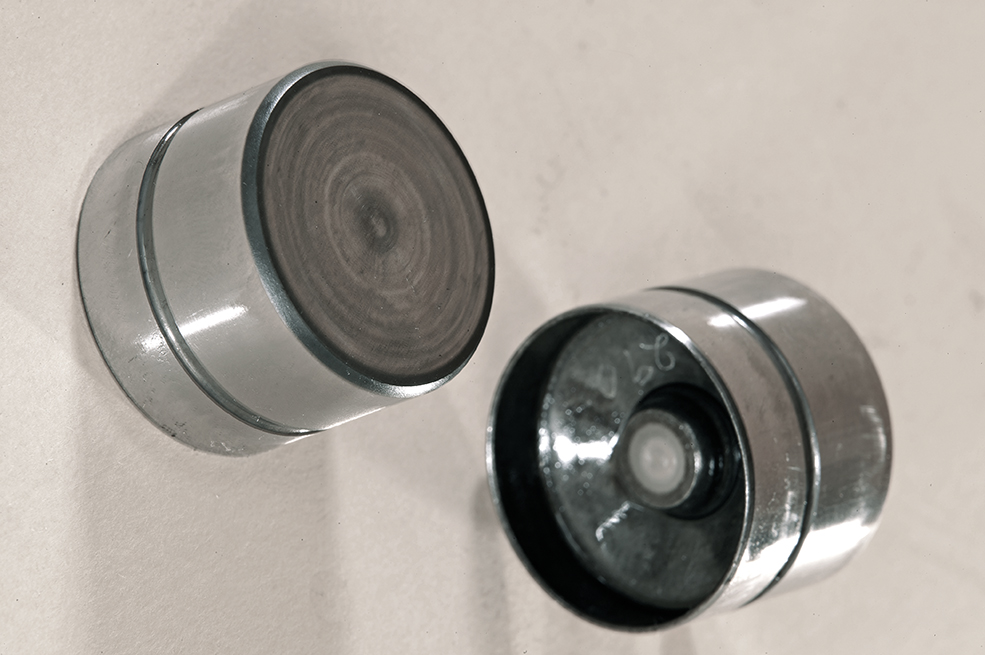
Most cam follows are hydraulic, but mechanical items are often required with particularly aggressive cam profiles.
Cylinder head porting a normally aspirated engine vs forced induction
When cylinder head porting a turbocharged or supercharged engine, you need to take a different approach to that when porting a naturally-aspirated cylinder head. With a turbocharged engine you can force a lot of air/fuel mixture through what is not necessarily a well-designed port, so the incoming gases are not too much of a problem. However, getting the exhaust gases out is.
On a traditional naturally-aspirated engine, the exhaust ports need to flow around 75% of the inlet ports. For example, if an inlet port flows 100cfm, the exhaust ports would need to flow around 75cfm. However, on a turbocharged engine the exhaust ports need to flow around 90% of the inlet ports. So, using our previous example, this would mean that the exhaust valves would need to flow 90cfm instead of 75cfm. Therefore, in short, a turbocharged head needs much more work on the exhaust ports, and a naturally-aspirated head needs more work on the inlet side of things.
Love modified cars? Did you know that we host performance events across the year at some of the biggest race tracks in the UK? Be sure to check out our Fast Car Entertainment events page to see what’s coming up next.

